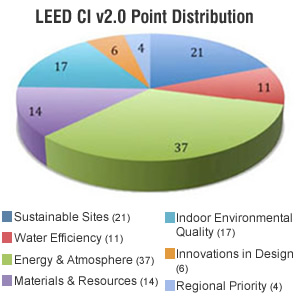- 3 reads

For those of you who are LEED accredited professionals, I’m sure you have heard about the latest and greatest improvements that are coming to the LEED 2009 rating system. LEED, which stands for Leadership in Energy and Environmental Design, is a program that allows buildings to achieve a certain level of certification based on their eco-friendliness. As with any relatively new rating system, there are bound to be many changes and improvements as we learn more about which tactics have the most impact on the end goal, which in this case is to make buildings more energy efficient and eco-friendly.
The most significant changes to the rating system will be the changes in credit weightings. Many of the credits have similar point values, but do not deliver the same environmental values for the cost they add to the design. The more points you get, the higher level of certification you achieve, so it doesn’t make much sense to give the same amount of points for tactics that are different costs. For example, you get one point for installing bike racks, which costs about $1,500, and you also get only one point for commissioning, which usually costs upward of $20,000.
To compensate for all the factors that should affect the value of the credits, the USGBC (United States Green Building Council) has developed a complex equation that includes factors such as cost, impact to the environment, difficulty to obtain, and impact on the building functions. This sophisticated model narrows down on what really matters. The pie chart below shows the current breakdown of points for the LEED-CI v2.0 rating system. As you can see, Indoor Environmental Quality bears the heaviest weighting.
The new rating system (see pie chart) puts much more emphasis on energy and atmosphere, since after all, our end goal is to build energy efficient and eco-friendly buildings. You will also notice that Regional Priority is an added factor. This credit will address the different environmental design challenges seen in urban and rural areas.
Over 100,000 professionals are now certified as LEED Accredited Professionals. This makes the LEED rating system the most popular green building certification for commercial buildings. Whether you believe in climate change or not, you can’t hide from the fact that someday every building will need some sort of environmental certification.

